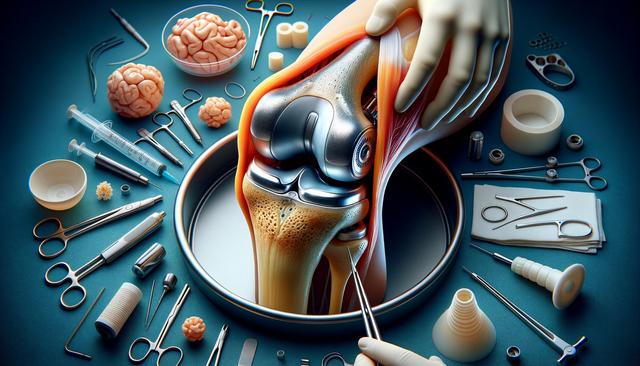Recognizing the Signs It’s Time to Consider Total Knee Replacement
Living with chronic knee pain can be exhausting, especially when it starts to interfere with daily activities such as walking, climbing stairs, or even resting. Recognizing the signs it’s time to consider total knee replacement is an important step toward reclaiming your mobility. Common signs include persistent pain that doesn’t improve with medication or physical therapy, stiffness that limits motion, and visible deformities in the knee joint.
Additional warning signs may include:
- Swelling and inflammation that doesn’t subside
- Difficulty participating in regular activities like grocery shopping or light exercise
- Sleep disturbances caused by knee discomfort
If these symptoms persist despite conservative treatments, consulting with an orthopedic specialist can help determine whether a total knee replacement is the right option.
What to Expect During Full Knee Replacement Surgery
Understanding what to expect during full knee replacement surgery can ease anxiety and help patients feel more prepared. The procedure typically lasts between one to two hours and is performed under spinal or general anesthesia. During the surgery, the damaged portions of the knee joint are removed and replaced with artificial components made of metal, plastic, or ceramic materials.
Here’s a general outline of the surgical process:
- Preparation and anesthesia administration
- Removal of damaged cartilage and bone
- Placement of prosthetic components
- Realignment and closure of the surgical site
Post-surgery, patients are moved to a recovery room where vital signs are monitored. Most individuals stay in the hospital for one to three days, depending on their overall health and progress.
Exploring Surgical Options for Advanced Knee Arthritis
When conservative treatments no longer provide relief, surgical options for advanced knee arthritis become a viable solution. While full knee replacement is the most common approach, alternatives such as partial knee replacement or minimally invasive techniques may be recommended based on the severity and location of the arthritis.
Factors influencing the choice of surgical method include:
- Extent of joint damage
- Patient’s age and activity level
- Presence of other medical conditions
Ultimately, the decision is made collaboratively between patient and surgeon, with the goal of achieving long-term relief and improved function. It’s essential to consider all available options and understand their potential benefits and limitations before proceeding.
The Recovery Process After Knee Joint Replacement
The recovery process after knee joint replacement varies from person to person, but typically involves a combination of rest, gradual movement, and therapeutic exercises. Initially, patients may use assistive devices like walkers or crutches to move around safely. Pain management and wound care are also crucial during the early stages of healing.
Rehabilitation milestones usually include:
- Walking with assistance within a day or two post-surgery
- Regaining range of motion within the first few weeks
- Returning to most normal activities within three to six months
Maintaining realistic expectations and following the recommended rehabilitation plan can make a significant difference in the outcome. Regular follow-ups with healthcare providers are key to monitoring progress and addressing any concerns early on.
The Role of Post Operative Physical Therapy and Long-Term Care
Post operative physical therapy for mobility is a cornerstone of successful recovery. Physical therapy typically begins shortly after surgery and continues for several weeks or months. The goal is to strengthen the muscles around the knee, improve flexibility, and restore function as much as possible.
Common physical therapy exercises include:
- Leg lifts and stretches
- Stationary biking
- Balance and gait training
In addition to therapy, long term care tips after total knee replacement should be incorporated into daily routines. These may include maintaining a healthy weight, avoiding high-impact activities, and staying active with low-impact exercises like swimming or walking. Paying attention to joint health can help extend the lifespan of the prosthetic knee and support overall well-being.
Conclusion: Moving Forward With Confidence
Full knee replacement offers a path to renewed mobility and relief from debilitating pain when other treatments fall short. By understanding the signs it’s time to consider total knee replacement, knowing what to expect during full knee replacement surgery, and committing to the recovery process after knee joint replacement, patients can take confident steps toward an improved quality of life. With proper post operative physical therapy for mobility and attention to long term care tips after total knee replacement, many individuals find that they can return to the activities they enjoy with significantly less discomfort.




Leave a Reply